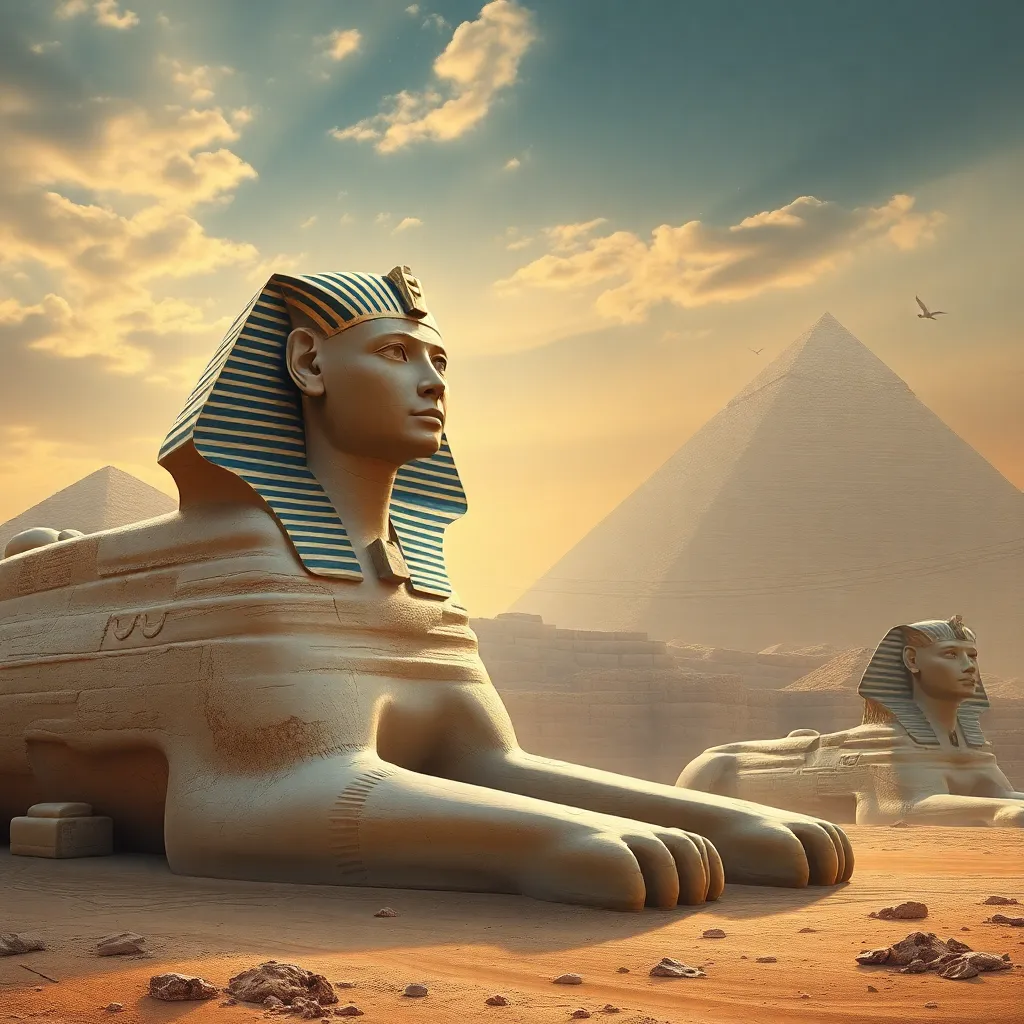The Sphinx and the Quest for Immortality
I. Introduction
The Sphinx, with its majestic human head and lion’s body, stands as one of the most iconic symbols of ancient Egypt. This enigmatic monument has fascinated historians, archaeologists, and tourists alike for centuries. Its historical significance goes beyond mere architecture; it embodies the rich tapestry of Egyptian mythology and the enduring pursuit of immortality.
In ancient cultures, immortality was not merely a fantasy but a core belief that shaped religious practices, burial rites, and the very legacy of rulers. The quest for eternal life is intricately connected to the Sphinx, prompting deeper exploration into how this monumental figure relates to the age-old desire for immortality.
The purpose of this article is to delve into the relationship between the Sphinx and the concept of immortality, examining its architectural grandeur, mythological significance, and cultural impact.
II. The Sphinx: A Symbol of Mystery and Power
The Great Sphinx of Giza is a remarkable structure measuring about 73 meters long and 20 meters high. Carved from limestone, its visage is believed to represent the pharaoh Khafre, while its body symbolizes strength and protection. The Sphinx’s gaze is directed towards the east, likely aligned with the rising sun, reinforcing its connection to the cycle of life and rebirth.
Historically, the Sphinx was built during the Fourth Dynasty of the Old Kingdom, around 2500 BCE, serving as a guardian for the nearby pyramids. It was constructed during a time when the pharaohs were revered as divine beings, and their tombs were designed for eternal existence.
In Egyptian mythology, the Sphinx serves as a guardian, representing the strength of the ruling class and the mysteries of the afterlife. It was believed to possess knowledge that could unlock the secrets of immortality, making it a powerful symbol in the quest for eternal life.
III. The Quest for Immortality in Ancient Egypt
In ancient Egypt, the belief in the afterlife was paramount. Egyptians viewed death not as an end, but as a transition to another existence. This belief influenced their burial practices and the construction of elaborate tombs filled with goods for the afterlife.
- Beliefs surrounding the afterlife: Egyptians believed that the soul would embark on a journey after death, facing trials and judgment before entering the Field of Reeds, a paradise reflecting earthly life.
- The role of pharaohs: Pharaohs were considered intermediaries between gods and humans, and their tombs were designed to ensure their immortality. The Sphinx played a crucial role in protecting these sacred sites.
- Connection between the Sphinx and eternal life: The Sphinx, as a monumental guardian, symbolized the protection of the pharaoh’s journey to immortality, reinforcing the belief that the dead could continue to live in the afterlife.
IV. Myths and Legends Associated with the Sphinx
The Sphinx is steeped in myths and legends that highlight its significance in Egyptian culture. One of the most prominent stories is that of the Sphinx’s riddle, which was famously associated with the Greek Sphinx. In this tale, the creature posed a riddle to travelers, devouring those who could not answer correctly.
This motif of the Sphinx as a riddle symbolizes the challenges of knowledge, wisdom, and the pursuit of understanding life and death:
- Riddles and wisdom: The Sphinx’s riddle underscores the importance of intelligence in navigating the complexities of life and mortality.
- Fate and mortality: The legends surrounding the Sphinx often explore themes of fate, highlighting the fragile nature of existence and the quest for immortality.
V. Architectural and Symbolic Significance of the Sphinx
The Great Sphinx is not only an architectural marvel but also a profound representation of power and divinity. Its construction is a testament to the engineering prowess of the ancient Egyptians, employing advanced techniques that still baffle modern scholars.
- Architectural techniques: The Sphinx was carved directly from a limestone plateau, showcasing the skill and artistry of its builders.
- Symbolism of the Sphinx: The Sphinx represents the sun god Ra, embodying the cycle of rebirth and the continuity of life, further connecting it to the theme of immortality.
VI. The Sphinx in Modern Culture
The Sphinx has transcended its ancient origins, becoming a powerful symbol in modern culture. It has appeared in various forms of literature, art, and film, often representing mystery and the quest for knowledge.
- Depictions in literature and art: From classical literature to contemporary novels, the Sphinx continues to inspire artists and writers, symbolizing the allure of the unknown.
- Impact on contemporary views of immortality: The Sphinx serves as a reminder of humanity’s enduring fascination with life after death and the mysteries of the universe.
- Preservation and tourism: The Sphinx attracts millions of tourists each year, standing as a modern symbol of ancient wisdom and the quest for eternal life.
VII. The Ongoing Mysteries: Discoveries and Theories
Despite centuries of study, the Sphinx still holds many mysteries. Recent archaeological discoveries have shed light on its history, yet questions about its purpose and construction remain.
- Recent findings: Archaeologists have uncovered artifacts and structures around the Sphinx, providing insights into the society that created it.
- Theories about its purpose: Scholars debate whether the Sphinx served solely as a guardian or had additional functions related to religious practices.
- Ongoing debates: Discussions about the Sphinx’s connection to immortality continue, as researchers explore its role in ancient Egyptian beliefs.
VIII. Conclusion
The Great Sphinx of Giza remains a powerful symbol of mystery, power, and the quest for immortality. Throughout this exploration, we have examined its architectural grandeur, its role in Egyptian mythology, and its impact on modern culture.
As we reflect on the enduring allure of the Sphinx, it becomes clear that the quest for immortality is a universal theme that transcends time and culture. The Sphinx continues to invite exploration and discovery, urging us to delve deeper into the mysteries of the past and their relevance in our lives today.
https://www.youtube.com/watch?v=AhuPEp4ct6U




